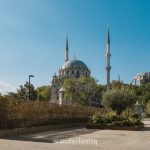
Everything You Need To Know :
Canada
Canada is a land of endless variety, where vast landscapes and diverse cultures meet. Its awe-inspiring natural wonders include the towering peaks of the Rockies, the vast prairies, and the remote beauty of the Arctic. Visitors can marvel at natural treasures like Niagara Falls, explore the rugged coastlines of the Maritimes, or witness the magic of the Northern Lights. Canada’s cities, such as Toronto, Vancouver, and Montreal, offer a lively mix of history, modernity, and multicultural vibrancy. From hiking, skiing, and wildlife encounters to urban exploration and cultural experiences, Canada invites adventure at every turn.



Heads Up!
Some of the links you’ll find on this site are affiliate links, which means that if you book a flight, a stay or even that quirky travel gadget through them, I might earn a small commission at no extra cost to you. It’s like buying me a virtual iced capp (thanks!), and it helps keep this blog running so I can continue to share all the travel inspiration and tips with you.
Safe travels and happy exploring!
Best Time To Visit
- High/Summer season ~ June – August
- Low/Winter season ~ November – March
- Shoulder season ~ April – May, September – October
Getting Around
Airports:
Canada has a lot of airports, so I am going to mention a major airport in each province/territory.
Alberta – Calgary International Airport (YYC)
British Columbia – Vancouver International Airport (YVR)
Manitoba – Winnipeg James Armstrong Richardson International Airport (YWG)
New Brunswick – Fredericton International Airport (YFC)
Newfoundland and Labrador – St. John’s International Airport (YYT)
Northwest Territories – Yellowknife Airport (YZF)
Nova Scotia – Halifax Stanfield International Airport (YHZ)
Nunavut – Iqaluit International Airport (YFB)
Ontario – Toronto Pearson International Airport (YYZ)
Quebec – Montreal Pierre Elliott Trudeau International Airport (YUL)
Saskatchewan – Saskatoon John G. Diefenbaker International Airport (YZF)
Yukon – Erik Nielsen Whitehorse International Airport (YXY)
Land Borders:
The Canada-United States border is the longest international border in the World at 8892 km. There are more than 100 land border crossings between Canada and the USA.
Alberta – Carway (Montana, USA)
British Columbia – Pacific Highway (Washington, USA)
Manitoba – Sprague (Minnesota, USA)
New Brunswick – Madawaska Edmundston (Maine, USA)
Ontario – Niagara Falls, Rainbow Bridge (New York, USA)
Ontario – Sault Ste. Marie International Bridge (Michigan, USA)
Quebec – St–Armand/ Philipsburg (Vermont, USA)
Saskatchewan – North Portal (North Dakota, USA)
Yukon – Beaver Creek (Alaska, USA)
Ground Transportation:
A little secret for you: hub airports have a train or at the least, a bus that takes you to the city centre. Always opt for it unless you’re moving with a million bags. It’ll be the cheapest way and usually the quickest way to get you into the city centre. From there onward, you can decide to continue with public transit or get a ride share to your accommodation.
Cities/towns and their respective transit systems will help you get around them. You should consider that unless you’re staying close to tourist attractions, moving by public transit is going to take a hot minute. With that being said, Canada is one of those countries where I would rent a car because everything is so spread out.
For example, to travel from Toronto to Calgary, you’ll most likely travel by air. You could drive the 36 hours but do you really want to? The train is an option too, but it also takes long. I am not going to lie, domestic flights are expensive in Canada. “Low-cost” airlines are not all that low cost, but they are cheaper than the big airlines. Take that into account when budgeting for your trip especially if you want to see different regions of Canada.

Culture & Religion
When Europeans began settling in what is now Canada during the 16th century, an estimated 200,000 First Nations people (referred to as Indians) and Inuit lived there. Today, about one million people in Canada identify as First Nations, Métis (of mixed European and Indigenous ancestry), or Inuit. Though these groups make up less than 5% of the total population, Indigenous peoples account for half of the population in the Northwest Territories and a significantly larger portion in Nunavut. The Cree are the largest of the First Nations groups. Historically marginalized and pushed to the fringes of Canadian society, Indigenous peoples are reclaiming their traditions. First Nations art, including stone and bone sculpture, basket making, and carving, have become especially popular.
Canada’s rich ethnic and historical diversity means that it lacks a single national culture. While both French and English are official languages, the culture of a region often reflects the dominant language spoken there. Indigenous peoples maintain their unique cultural identities, particularly in the northern regions. Quebec’s French culture is especially distinct, known for its unique architecture, music, and cuisine. Popular dishes in French-speaking areas include poutine and traditional meat pies such as tourtières and paté à la rapure. Quebec is also a leading producer of maple syrup, with maple sugar-infused sweets being widely enjoyed across the country.
Canada has traditionally encouraged immigration to grow its population, workforce, and domestic markets. As a result, immigrants now represent about one-sixth of the total population. Over three-quarters of Canadians are affiliated with an organized religion, with recent immigration trends contributing to a rise in the number of Muslims, Hindus, Sikhs, and Buddhists. The predominant religion is Christianity.
Let’s talk travel insurance for 1 second,
Travel insurance is your safety net when things don’t go as planned. Whether it’s a medical emergency, a canceled flight, or lost luggage, it’s there to save you from unexpected expenses and a lot of stress. For solo travelers especially, it’s like having backup when you’re out in the world on your own. It’s a small price to pay for peace of mind and knowing you’re covered if life throws you a curveball while you’re exploring.
World Nomads is the company I trust to handle my travel insurance needs. Their 2 insurance packages can cater to any kind of traveler. They are there to help you 24/7.
Make the smart move and get travel insurance for all your adventures.
Have a safe trip!
Queer Factor
Canada has a long history of supporting the LGBTQ+ community, becoming the fourth country in the world to legalize same-sex marriage nationwide in 2005. Montreal’s Le Village is one of the largest and oldest gay neighbourhoods globally, reflecting the country’s commitment to inclusivity. Known for its friendliness and warm hospitality, Canada is widely regarded as one of the most LGBTQ+ friendly countries in the world, making it a top travel destination for queer visitors.
LGBTQ+ travellers can feel extremely safe in Canada, particularly in larger cities, which boast vibrant gay villages, bustling nightlife, and numerous community associations and support groups. While attitudes in northern and rural regions may be more conservative, these areas remain welcoming and safe for LGBTQ+ visitors.


Safety & Travel Advice
Canada is widely regarded as one of the safest places in the world. It is important to practise some common sense safety precautions that you would anywhere else in the world. Pay attention to your surroundings and keep your valuables where you can see them. If you visit the national parks, follow the rules, don’t litter and don’t feed the animals. Oh, and watch out for the “cobra chickens”.
Emergency numbers:
All – 911
If you’re Canadian, check official travel advisories when planning a trip, this will help you know what to expect and when to be extra cautious at your destination.




